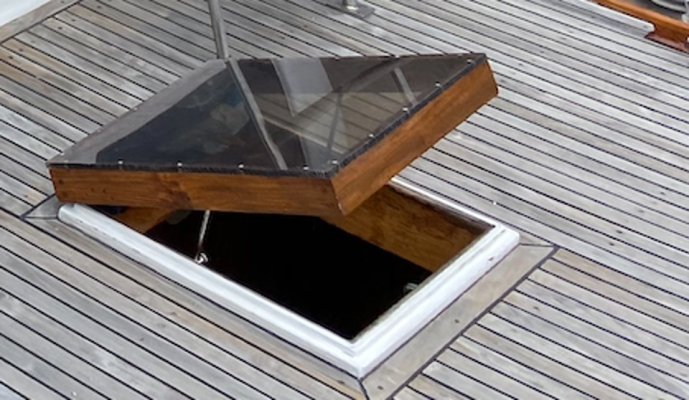socalrider
Guru
- Joined
- Feb 14, 2020
- Messages
- 1,061
- Location
- usa
- Vessel Name
- SEA WOLF
- Vessel Make
- 1979 CHB 41 Trawler
All,
The previous owners of my '79 CHB seem to have replaced the Lexan or Plexiglas covering on my rear wood-frame hatch - from the pic below (taken at survey) you can probably make out that it is secured with countersunk screws - a big no-no from what I understand.
Sure enough, in the past few months, the hatch has started cracking badly from the screw holes, so I'm planning on replacing properly before it starts raining here. You can see there's no frame holding the material to the hatch, just the screws. It's probably 5/8" thick and tinted.
Advice appreciated! One idea is to overbore the screw holes in the Lexan (or other material), fashion a frame from wood, countersink screws into the frame to better distribute the pressure. I have butyl tape to make the seal.
The previous owners of my '79 CHB seem to have replaced the Lexan or Plexiglas covering on my rear wood-frame hatch - from the pic below (taken at survey) you can probably make out that it is secured with countersunk screws - a big no-no from what I understand.
Sure enough, in the past few months, the hatch has started cracking badly from the screw holes, so I'm planning on replacing properly before it starts raining here. You can see there's no frame holding the material to the hatch, just the screws. It's probably 5/8" thick and tinted.
Advice appreciated! One idea is to overbore the screw holes in the Lexan (or other material), fashion a frame from wood, countersink screws into the frame to better distribute the pressure. I have butyl tape to make the seal.


